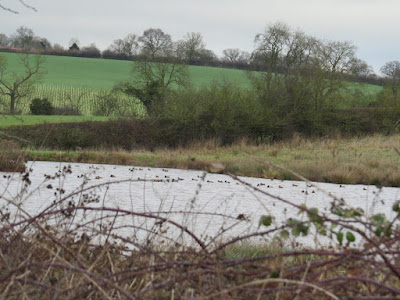Last Sunday was a washout (snowout?) It snowed all day and I decided against visiting the patch. I was tempted to visit in the week, but a combination of icy roads and cricket (on Thursday morning England seemed to be doing all right!) kept me away.
Even this morning I overslept, but the delay proved surprisingly fortuitous. It was a very dull, cloudy morning, and rain was forecast for late morning. However the late start meant that Dave and I were in exactly the right place when a flock of eight Hawfinches flew high overhead from the direction of the hamlet of Morton Bagot heading west towards Studley. We nearly missed them though. We could hear a couple of strange "seep" calls and looked about, only spotting them and realising they were Hawfinches after the had gone over us and were heading away. Considering Dave has seen 23 and I have seen 12 (including this flock) this autumn, we probably should have been a bit sharper at picking them up.
There was good and bad news as we approached the pool and flash field. The good news was that the water level appears to have risen substantially, the bad news was that apart from one small patch, it was all ice. Seven Mallard rose from the one bit that was ice free.
The flash field did at least contain a pair of Stonechats, presumably the pair that has been wintering in the area which are clearly ranging over quite a wide area as we haven't seen them for weeks. Its good to see that they have survived the freeze.
The walk back produced about a dozen Siskins. With the light getting even worse I hadn't been tempted to get my camera out until this little chap appeared.
Grey Squirrels are extremely unpopular with the gamekeeper, the landowner, and even I think they shouldn't really be here. They are undeniably cute though.
By the time we got back to our cars it was pelting down. A flock of 25 Lesser Redpolls flew into the hedge, but I was too soggy to investigate further.













